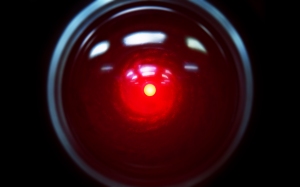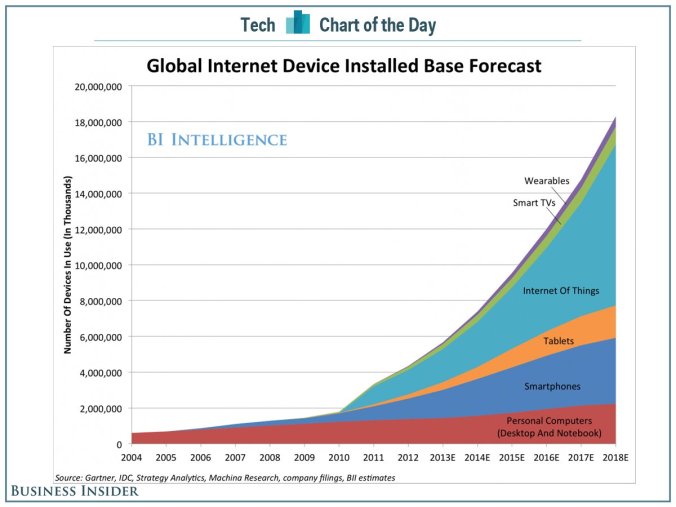The Internet of Things (IoT) is an exciting, and perhaps at first a little worrying concept. I am a big cinephile. Admittedly, when someone tried to explain to me what exactly the ‘Internet of Things’ is – the first thing that comes to mind is the terrifying Hal 9000 of Kubrick’s 2001: A Space Odyssey.
However, I think it is a bit better summed up in the following video.
As stated within the video, with the current internet protocol IPv6, it is possible to “…live in a world filled with sensors, with data reacting to us, changing every moment dependent on our needs” (FW: Thinking 2013). So essentially, the Internet of Things is a concept of technologically advancing our previous ‘analog’ items to an unimaginable level. Not only is that idea not far off, it may have already arrived.
Some of these seemingly unrealistic ideas or products might appear optimistic to skeptics, particularly since we are still waiting for a working Hoverboard. However, technology mastermind Google is already in the works of revolutionising the IoT. Just this year, Google bought Nest, a thermostat company, for over US$3 billion (Clark 2014). This move is Google’s first step to market the ‘connected home’. As Miners states, by taking control of Nest, Google is able “to link heating systems, lighting and appliances to the Internet, so they can be made more efficient and be controlled from afar.” (2014).
Than, in June this year, Google’s Nest bought DropCam for US$555 million (Barr & Winkler 2014). DropCam is a “internet-connected video-monitoring service” (Barr & Winkler 2014), that when combined with the Nest hub, will further produce services and products to interconnect the household via the internet.
It is evident that IoT is becoming a very viable market, and Google’s interest in developing and marketing products is, as Kovach states, “…just the beginning of the ‘Internet of Things'” (2014). And if you believe you own a few too many devices now, according to Business Insider Intelligence, that number is expected to grow exponentially with the IoT to become the dominant internet devices in the near future (as depicted in the graph below).
Sources:
2001: A Space Odyssey 1968, DVD, MGM, Shepperton UK, dir. Stanley Kubrick.
Barr, A & Winkler, R 2014, ‘Google’s Nest to Buy Dropcam for $555 Million; Deal for Video-Monitoring Security Startup Is a Push to Dominate Connected Home Devices’, Wall Street Journal, 20 June, viewed 24 October 2014.
Business Insider Intelligence 2014, ‘Global Internet Device Installed Base Forecast’, Graph, viewed 24 October 2014, <http://static.businessinsider.com/image/52d46f41eab8ea664bb245af/image.jpg>.
Clark, E 2014, ‘Media companies must prepare for the “Internet of Things” with Big Data’, INMA, 26 January, viewed 24 October 2014, <http://www.inma.org/blogs/value-content/post.cfm/media-companies-must-prepare-for-the-internet-of-things-with-big-data>.
FW: Thinking 2013, ‘What is the Internet of Things?’, YouTube clip, 1 March, viewed 24 October, <http://www.youtube.com/watch?v=LVlT4sX6uVs&feature=youtu.be>
Kovach, S 2014, ‘Google’s Multibillion Purchase Of Nest Is Just The Beginning Of ‘The Internet Of Things’, Business Insider, 14 January, viewed 24 October, <http://www.businessinsider.com.au/internet-of-things-billions-of-connected-devices-2014-1>.
Miners, Z 2014, ‘Why Google wants to sell Thermostats’, ComputerWorld, vol. 48, no. 2, p. 2.

